One of the most common challenges parents of toddlers faces is when they deny staying in their crib. Unfortunately, many parents believe that there is nothing they can do to prevent this from happening. But fortunately, that is not necessarily needed to happen in your case. Why! Because you’re here.
First, find out and consider every cause of why your toddler is or might be attempting to step out from their crib. You probably will find that it is often motivated by a desire to explore. Either, it can be that perhaps your baby is testing his/her boundaries. Or maybe it’s time to make a sleep schedule adjustment for your not-so-little one.
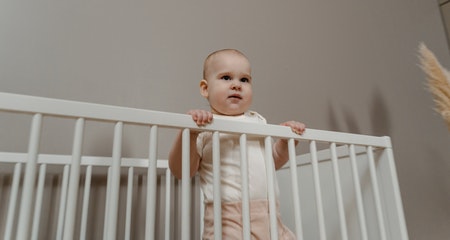
For example, I recall when my baby decided to flex her bones by climbing her crib railing. Like most parents, not only my husband and I but the whole family were also terrified. We had no idea in heaven how to respond to that.
So was it the end of the planet for us? Not necessarily. The good news is that you don’t have to go through that stage. Why- Because I’m here to share exactly what I’ve learned so far with my 9 years of Mommy life!
SO, without further ado, read on to know how to keep your toddler from climbing out of the crib.
Table of Contents
At What Age Do Babies Start Climbing Out of Cribs?
Babies who are learning to climb may attempt to flee their cribs at night or during naps. This behavior is most commonly observed when babies reach the toddler stage. It can, however, vary depending on gross motor skill ability.
It all starts when they learn to pull on objects to stand. Some babies as young as a few months to 10 or 11 months old may be able to get out of their cribs. However, it can be between 12 and 24 months of age when your child starts regularly climbing.
10 Ways to Prevent Your Baby/ Toddler from Climbing Out of the Crib
So, if your toddler expresses an interest in joining the circus, keep these tips in mind in order to make them stop climbing.
Make It More Difficult:
First and foremost, make it difficult for your toddler to climb out of their crib while keeping them safe.
1# DROP THE CRIB MATTRESS
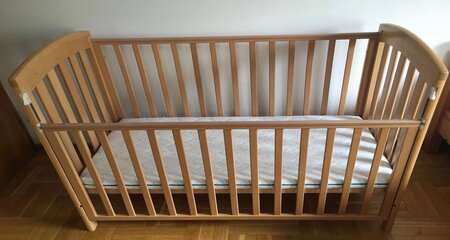
The American Academy of Pediatrics (AAP) recommends dropping the crib mattress to the lowest point of setting if you haven’t already. Lowering your baby’s mattress as much as possible is the simplest way to keep them from climbing out of their crib. This approach may not provide a permanent solution, but it may allow you a few months of sleep.
Even if your baby hasn’t climbed out of the crib yet, it’s essential to lower the mattress. Many parents go a step beyond and lower crib mattresses when their babies can sit independently, as standing usually follows soon after.
Remember to only use the three to four settings recommended by the manufacturer to lower the mattress.
NB: Only use cribs that have been medically reviewed, manufactured, and tested for safety in the last few years.
2# REMOVE ALL BUMPERS AND STUFFED ANIMALS
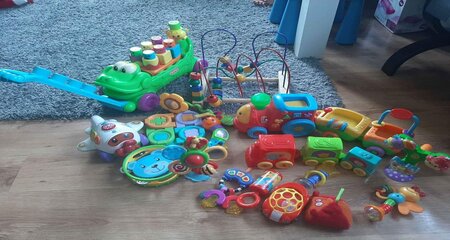
Consider removing all bumpers and blankets from the crib. Under the age of 12 months, kids are supposed to sleep on a bare mattress with nothing on it but a fitted sheet. Remove any stuffed animals as well. Kids are inventive, and they will stack these items and use them as a ladder.
NB: Stuffed animals are not allowed because they pose a safety risk to young babies.
3# TURN THE CRIB AROUND
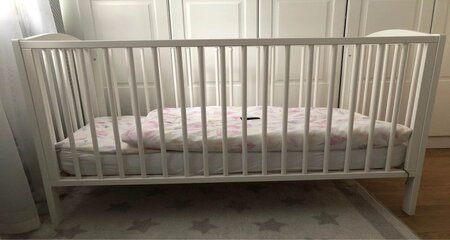
Some cribs come with a lower side than other. Typically, where the higher side of the crib is supposed to go against the wall, you want to turn it over and face it out. This new format will surely make climbing over more challenging for the little legs.
4# USE SLEEP SACKS

Purchase large or age-appropriate sleep sacks. This prevents your child from lifting their leg up and over the side of the crib. Sleepsacks provide comfort to young children, similar to swaddles. The asleep sack may restrict your child’s limbs just enough to make climbing out of the crib difficult. If your child believes they can outwit you and removes the sleep sack entirely, turning it backward can help obstruct those efforts.
There are so many sleep sack models out there that place the zipper in difficult-to-reach places, such as near the bottom. Or invest in one with a hidden zipper to make fleeing more difficult.
The zipper on some sleep sacks, such as the Halo sleep sack, is placed at the base, making it difficult for your kid to get.
NB: If your toddler is more daring, you may need to sew the child’s sleep sack a little narrower in the lower half.
5# USE ANTI-CLIMBING PJ
If the sleeping sack idea is a flop one for you, consider using Anti-Climbing pajamas to prevent your toddler from climbing. Anti-Climbing pajamas are more likely normal PJs, only with a stretchy fabric between the legs.
Toddlers can still walk around in their pajamas, but they appear to be more constrictive than a traditional sleep sack.
NB: For older toddlers, this option might not work as well as it will for young kids for purposes such as toilet training. In this matter, you may use the sleep sack technic for our older toddler.
6# USE THE CRIB ONLY FOR SLEEPING
Allow being in the crib with only the purpose of napping or sleeping. Do not force your child to stay in the crib when they are awake since it can confuse them about the purpose of being in the crib. Therefore, climbing out of the crib will appear as allowed and normal behavior to them.
7# RE-SCHEDULE THE BEDTIME
Sometimes, all it needs to keep your child in the crib is re-scheduling their bedtime. Notice, do they wake up so often around the same time? Did they go to bed too early and complete their daily sleep cycle already? If you find the answers as YES, then it’s time to re-schedule their bedtime.
Just keep in mind to change it gradually and little by little, since a sudden change in sleep time can cause sleep regression resulting in climbing out of the crib. Notice the effects of new sleep time on your baby as you go adjusting the timing.
8# TRY A VISUAL CUE
This one has a half and half chance of working if you do the following:
- Have a toddler who is old enough to climb out of their crib safely
- Don’t want them to climb out repeatedly (all night long)
To put it another way, if your child’s acrobatics aren’t threatening but just irritating, you might prefer getting one of those “sleep to wake” toddler clocks that will show your child when it’s tended to get out of the crib.
This type of clock is usually used for toddler sleep training. However, for toddlers who can safely climb out of their crib without causing harm, the clock may indicate when they are permitted to do so.
9# SHIFT TO TODDLER BED
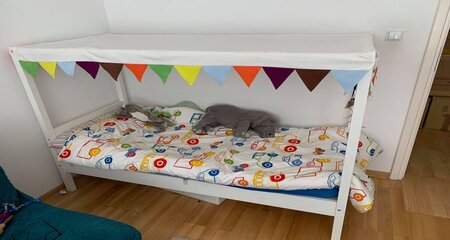
If your child is still climbing out of the crib on a regular basis, a toddler bed may be a better option. The National Center of Early Childhood Quality Assurance suggests that young kids stop using cribs since they can jump out or are 35 inches tall.
Toddler beds, which are intended for children under the age of three, can serve as a compromise between a crib and a twin bed. This carefully crafted bed is not completely enclosed, but it does include guard rails to keep toddlers from rolling out.
Read: Extra Tall Cribs for Toddlers
10# ALLOW THEM SOME REAL CLIMBING
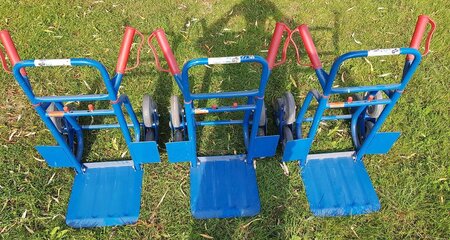
My toddler has an insatiable desire to climb, and it was very difficult for me and my husband to keep her in the crib. But we notice a change in her sleep when she started climbing the windows. Sounds silly, right? It might be, but this is tested that if you allow your baby to climb at their own pace, they might lose interest in climbing the crib.
Sign her up for some gymnastics several times a week. I personally assigned mine to 20 minutes of swimming two days a week. You can do that too.
Plus, some physical activities will make them tired by the time they get to bed, and they will fall asleep instead of climbing the crib.
Reinforce The Rules:
No matter how much our kids protested, we would not allow them to run out into the street. We must face our children’s attempts to climb out of their cribs with the same tenacity. And give them sleep training and create good sleeping habits to prevent crib climbing.
- When you notice them climbing out, open their bedroom door and say a firm “no.” Though this is not my preferred method; and it will not work if you are dealing with serial escape artists. However, it may assist those who have recently discovered the ability to climb over the rails of their crib. If you have a video monitor, this technique works best, but you can also wait by their door and listen if you don’t.
- If they have already climbed out of their crib, gently lead them back into it. Or pick them out without anger or frustration if they aren’t walking with you, and say “no” again.
- Don’t engage in any more interactions or conversations with your child, as this will only encourage the behavior. Every time, leave the room. Staying will only encourage them to interact with you. Remember not to turn this into a game.
- Switch off with another caregiver if one is available. This will help you maintain consistency, present a united front, and give you all a break.
- Consistency is essential. Toddlers require three days of consistent repeating before they begin to change their behavior.
Safety Considerations for Those Who Do Climb Out of The Crib

Because your baby is climbing, double-check that the room is adequately childproofed in case your baby falls out of their crib. Toddler-proofing a room differs from baby-proofing in that toddlers are larger, stronger, and often more determined, which means trouble can come much more easily!
The following items are essential for baby and toddler proofing:
Keep an Eye Out for the Furniture
Bolt all heavy furniture to the wall, so it can’t be pulled down. Also, on any furniture with sharp edges, use a corner or edge bumpers.
Using Cords to Secure Long Drapes or Blinds
Tie all blind cords high and out of reach, or cut them and add breakaway safety tassels. Place cribs or toddler beds away from window blinds or drapes.
All Electrical Cords Must be Secured or Removed.
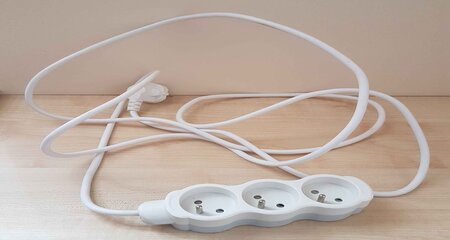
To keep longer cords fastened against walls, use cord holders. This way, your toddler won’t be able to pull on any electrical wiring. This could protect your baby from electrical hazards or heavy equipment that falls after a couple of small tugs.
You should also consider replacing free-standing lamps with overhead lighting to protect your little grounders.
Electrical Socket Protection
To protect your toddler from an electric shock, cover all exposed electrical sockets with outlet covers. If a baby or toddler pulls a small outlet cover out of the wall, it can become a choking hazard. Look for “childproof” covers that must be removed with two hands or with cover plates that screw on. Place large furniture in front of outlets for added security.
Putting Up Window Guards

Keep your child’s crib and other furnishings away from the windows. Don’t rely on standard window screens to keep children out; they’re designed to keep insects out, not children in. Instead, install childproof screens or, even better, window guards, which have been shown to reduce the risk of falls.
Installing Finger Pinch Guards on Doors
If your toddler is going to climb out of bed, it’s one thing to let them run wild in their own room, but let them run wild throughout the house! No way, no how!
Have ways to secure their bedroom door so that even if your little Houdini escapes from their crib, they don’t have complete control of your home.
A baby gate across the door or a doorknob guard are both excellent options for little grounders.
Cleaning the Toddler’s Room
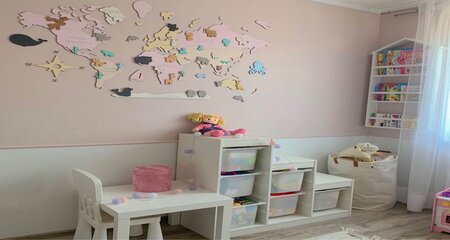
After their late-night diaper change, don’t leave the changing mat on the floor with the pot of diaper cream for the night long. Diaper cream can leave a fun fingerprint on walls if discovered. Or it can appear to be a delicious yogurt and make your baby sick if consumed.
Keep Using Baby Monitor
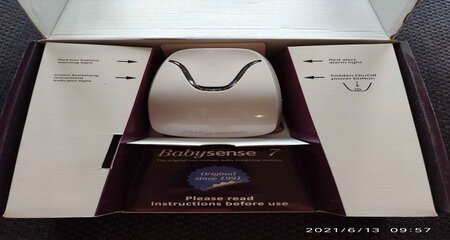
As your children grow older, the new parenting concerns fade a little as parents. And you’re no longer as glued to the baby monitor as you were when they were a newborn. However, it is probably more important to keep an eye on your monitor at this age.
With a video monitor, you can check to see if your toddler is restless without entering your toddler’s room and disturbing them. Potentially prevent a toddler climbing incident before it occurs.
If you want to find your toddler climbing in the middle of the night, set it to a sensible level. And use this time to train them to stay in bed.
Obtain Your Child’s Viewpoint
To keep them safe during future jailbreaks, keep their bedroom completely toddler-proof. The best way to secure your baby’s room is to see things through the eyes of your baby.
Yes, get down on your hands and knees, be a toddler mom and begin crawling. What’s at baby’s eye level and easily accessible? Children can be fascinated by anything they see, including computer cords and glassware on low shelves. When you’re towering over something, it’s easy to overlook breakable or dangerous items.
Remember that toddler proofing a room is only a temporary measure that you should continue to use. Even if the other strategy is working for the time being.
Warning: Why Not Use Crib Tents?
The US Consumer Product Safety Commission states that all crib tents are hazardous because they can tangle and trap your child in an attempt to keep them in.
According to the 2010 report, the CPSC has received at least ten reports of incidents involving tents used on cribs and play yards since late 2007. Including one death and one near death.
Conclusion
Children enjoy exploring and pushing the boundaries. This is how they learn what is and isn’t allowed. So, if your child climbs out of their crib once, don’t worry: it might not happen again. And even if it does, it’s not a sign that you need to switch to a big kid bed or toddler bed right away.
But, if you have already attempted all of these tricks I’ve mentioned above and your toddler is still continuing crib climbing, it might be time to switch to a regular bed, toddler bed or even twin bed.
Simply use the following methods to keep them in the crib for as long as possible. And, in the meantime, have a look at their routine and environment and make any necessary changes. You can also talk with some sleep consultants to gain some insight into necessary environmental changes. Or get someone who can provide professional medical advice.
Remember, they CAN learn to stay in their crib if they have a plan in place and know what steps to take. Of course, repeat these methods several times in a row to train their tiny brain.
Also read: